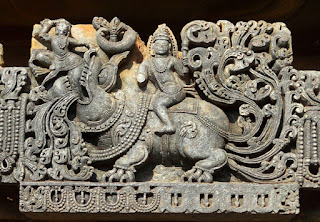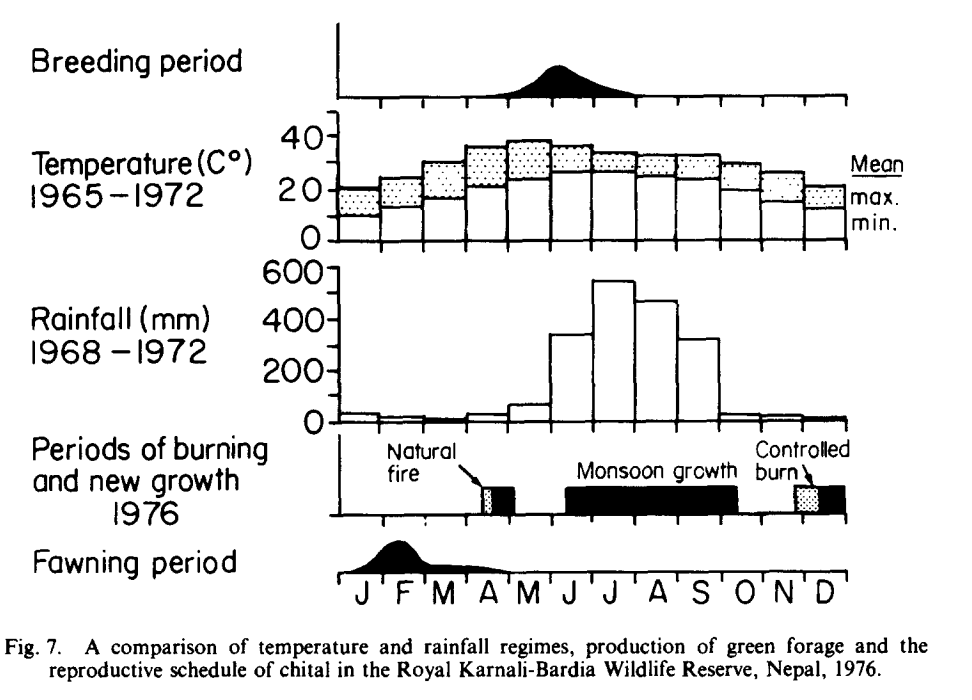About another proof that Rig Vedas had to have been written in India proper, proof discovered through applying animal calendar markers theory to one of the more obscure parts of the Marut's legends.
7th c. Maruts relief, Sambor Prei Kuk, Kampong Thom Province, Cambodia.
In the Vedic mythology, Maruts, are a group of storm/rain deities which always accompany Indra...You can read about them in "THE MARUTS" by Uma Chakravarty...
Indra of course primarily the monsoon rain god, whose main duty is to annually defeat Vritra, the dragon of drought...You can read about this aspect of Indra in "Indra as God of Fertility" by E. Washburn Hopkins
BTW
Indian elephants mate during Indian monsoon season...
Which is why Indra, the thunder and rain god, rides on a white (cloud) elephant...
Articles about elephant calendar marker, India: "Musth", "Samantabhadra", "Modesty", "Ganesha"...
Marut's main duty is to bring rain.
In RV we can read that:
They are clothed with rain
Rain follows them
They bring water and impel rain
They cover the eye of the sun with rain
They create darkness with the cloud when they shed rain
You can read more about this in "Vedic Mythology" by Macdonell, Arthur Anthony
Their mother is said to be the ocean or the heavenly cow Pṛśni (rain cloud). And their father is said to be Agni (fire) or Vāyu (wind).
A terrestrial river is called, Marudvṛddhā, 'swelled by the Maruts'.
All of this describes the summer wet monsoon
Varāhapurāṇa chapter 82: A "river of the sky" starts at the "ocean of the sky" and, being agitated by the elephant of Indra, falls at the top of mount Meru, where at the bottom it forms four great rivers...I talked about this in my post "Elephants and the river in the sky"...
In other places in Rig Veda, Maruts are said to be the sons of Rudra, and are also often called Rudras. I will talk about Rudra and Rudras soon. This is a very interesting topic which deserves its own post.
On the Sambor Prei Kuk relief, maruts are depicted riding on Makaras.
Makara is another complex animal calendar marker for monsoon season, which could have only been developed in Indian Subcontinent. I talked about it in my posts "Yakshi" and "Makara"...
And, Makara is already found, with many other, later deified, animal calendar markers, in Indus Valley Civilisation. I talked about this in my post "Proto Durga"...
On the Sambor Prei Kuk relief, the central Marut is depicted riding on an elephant.
Already explained that elephant is an animal calendar marker for the summer monsoon season, cause elephant mating season peaks in Jul/Aug, peak of summer monsoon season in India...
The elephant rider is flanked by two horse riders. Horse is a universal solar symbol. And horse mating season (Apr/May-Sep/Oct) marks the summer monsoon season in India...You can read more about it in my article about solar horse in India, "Hayagriva"...
Anyway, after this shortish introduction, let me get to the interesting bit 🙂
"Maruts, whose steeds are the spotted deer..." Rig Veda 7.40.3
I have seen attempts to replace spotted deer with spotted horses, probably to make the whole story more Steppe Indo-European. But there is a perfectly good Indian Subcontinent explanation for this "weird" choice of ride for Monsoon Rain Gods...
The chital or cheetal, also known as the spotted deer, is a deer species native to the Indian subcontinent...
Now I explained many times before, animal calendar markers mark significant events from the annual reproduction cycle of the depicted animal: mating, birthing...
Events well known to the local population. So for the spotted deer, people in India would say: "when spotted deer start mating, that would mean that monsoon rain is soon to arrive to"...Why? Cause of this:
You can read more about cheetal deer here and here...
How would locals have known when spotted deer started to mate? Chital stags bellow loudly during mating season. Not something you can miss...
Chital Stag Bellowing - Unseen and Often Unheard Chital Deer Call
Chital stags fight madly during mating season. Also not something you can miss...
So the locals could indeed say "mating of spotted deer is followed by monsoon rain". Or they could say "spotted deer brings rain"...Or they could say "Maruts arrive on chariots pulled by spotted deer"...More poetic...
And apparently this was incomprehensibly difficult to decode for all the people who looked at Rig Veda before me...Why is that? I mean this is obvious, right? Anyone with some knowledge of Indian climate, flora and fauna could have figured this out, right?
Well, yes, if you knew about the existence of animal calendar markers, then this would be obvious. But it seems that the idea of using animals and plants as calendar markers never occurred to anyone...Before me...
And honestly, I am not bragging. I just can't believe I am...
1981, Belgrade, Serbia, Yugoslavia...Šarlo Akrobata - O, o, o, o, o...
Prvi i Jedini 🙂 The First and The Only one
Finally, the fact that the spotted deer is an animal calendar marker for the beginning of summer monsoon in India, means that the hymns about Maruts and their spotted deer steeds had to have been composed in India proper, where all this spotted deer nonsense actually makes sense.
For those interested, I talked about deer as animal calendar marker in many different posts, like "White stag", "Deer kills snake", "Winter deer", "Lachish animal calendar", "Dancing with deer and birds", "Mythical beast from Xian"... Different deer, different mating season, different climate, different animal calendar marker, for different time of the year with different meaning.
That's it. To read more about ancient animal and plant calendar markers, start here…Then check my twitter threads I still didn't convert to blog post...I am way way behind...



















No comments:
Post a Comment